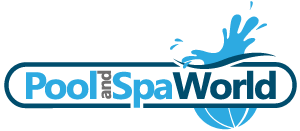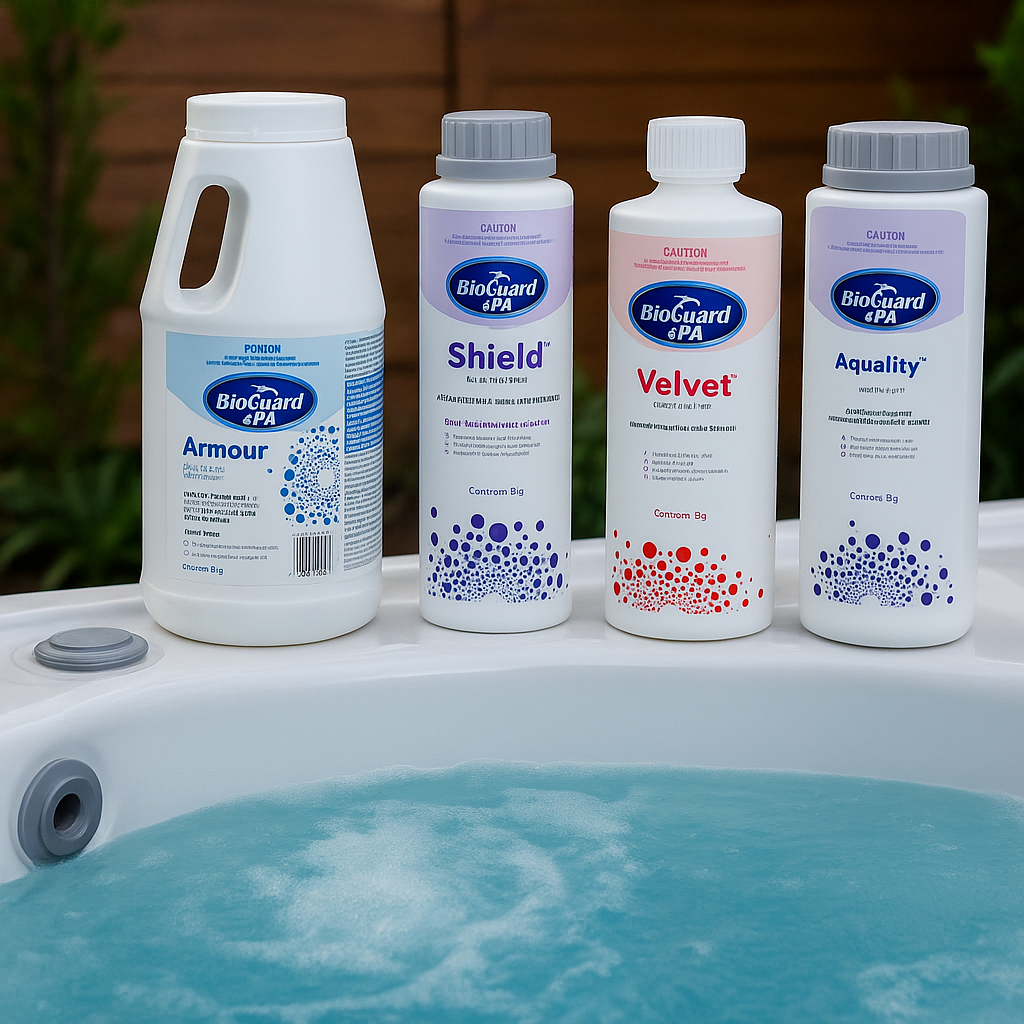Contents:
Overview & Core Rules
This short document gives a safe, consistent process for applying chemicals to spas, swim spas and pools. The single most important rules:
- Never mix chemicals together. Add each chemical to the water (not the other way round) and keep them physically separate. Mixing can cause violent reactions.
- Always add chemicals with the circulation pump(s) running. Use return jets or near the skimmer depending on the product instructions so the chemical disperses quickly.
- Leave 30 minutes to 1 hour between each chemical step so the product disperses and tests reflect the change. (Exception: follow product label where it gives a different wait time — for example, some shocks need longer.)
- Test between each step. Don’t guess — use test strips or a drops kit to confirm results before adding the next chemical.
Safety & PPE
- Wear chemical-resistant gloves (nitrile or neoprene) and splash goggles.
- For powders or concentrated liquids, wear a dust mask or respirator if dust/vapour is present.
- Work outdoors or in a well-ventilated area — never inhale fumes.
- Keep phones and cameras away while handling chemicals (no distractions).
- Keep children and pets away from the storage and treatment area.
- Read and follow each product label and the Safety Data Sheet (SDS) for first‑aid details.
General Step-by-step Workflow (apply to all)
Recommended gap between additions: 30–60 minutes. For shocks or heavy dosing, wait longer and follow product label.
- Test the water. Use a reliable test kit (drops kit is preferred). Record pH, total alkalinity (TA), sanitiser (free chlorine or bromine), calcium hardness (pools), and cyanuric acid (if using stabilised chlorine).
- Correct total alkalinity (TA) first if it's outside the recommended range for your type of water. Make small adjustments, run pump, wait 30–60 min, then retest.
- Adjust pH next. pH affects sanitizer efficiency. Add pH reducer (acid) or pH increaser (alkali) as needed. Add to water with pump on; wait 30–60 min and retest.
- Address calcium hardness (pools) or scale risk (spas). If hardness is low, add a calcium increaser per product directions; if high, consult a professional — do not attempt large adjustments quickly.
- Add any metal sequestrants (if metals/staining is a risk). Run pump 30–60 minutes and retest.
- Apply sanitiser. Add chlorine (liquid, granule, or tablets) or bromine according to label. If using tablets, use a floater or feeder — do not put tablets directly into the skimmer unless specified.
- If water needs shocking: add shock product (chlorine shock or non-chlorine shock) per label. For pools, shock is often done in the evening. After shocking, wait until sanitiser levels return to recommended safe ranges before use — this often takes several hours; do not re-enter until safe.
- Add clarifier / enzymes as needed. These are typically low-dose, add with pump on, wait 30–60 min and retest/monitor clarity over 24–48 hours.
- Retest and document. After each major change retest: only proceed to the next chemical when your test confirms the target range.
Tip: When adding concentrated or granular chemicals that require pre-dissolving (check label), add the chemical to a bucket of water and stir — never pour water into the chemical. Then add the diluted slurry slowly to the deep end or near a return jet with circulation on.
Spa & Swim Spa Specific Notes
- Because of higher temperature and bather load, spas need higher sanitiser levels and closer monitoring. Heat accelerates chemical reactions.
- Typical practice: test daily and adjust small amounts rather than large, sudden doses.
- Be conservative with shock in spas — follow product label. Many operators prefer non-chlorine shock for spas because it dissipates faster and is gentler on users, but both are used depending on the situation.
- When adding chemicals to a hot spa: add them slowly and in small increments; wait 30–60 minutes and retest. Consider lowering temperature (if practical) while doing large adjustments.
- Inform users: after heavy dosing (especially shock), keep the spa closed until levels return to normal; in many cases this means waiting several hours.
Pool Specific Notes
- For full-size pools, circulation patterns and volume matter. Add chemicals to the deep end or at return jets while pump and filter are running.
- When shocking a pool (to deal with chloramines or algae), schedule the shock in the evening and run filtration for several hours (often overnight). Test before allowing swimmers back in.
- If using stabilised chlorine (with cyanuric acid), track CYA as that affects required chlorine level.
- Backwash or clean filters more frequently after a heavy chemical application (e.g., after floc/clarifier or after algae treatment).
Special Situations
Algae
Usually treat with an algicide plus shock. Follow label directions; run filter continuously and brush surfaces. Repeat treatment if necessary — do not add algicide and shock at exactly the same second: allow a 30–60 minute gap between active chemicals.
Cloudy Water or Heavy Bather Load
Use clarifier, enzymes and adjust sanitiser. Clarifier can create particulate that the filter must remove — expect to run the pump longer and clean the filter.
After a Heavy Rain or Fill
Test for pH, alkalinity and sanitiser and adjust as a first step. Top up sanitizer only after pH/TA are corrected.
Storage, Compatibility & Emergency
| Keep separate | Why |
|---|---|
| Chlorine products & acids | Mixing may release toxic chlorine gas. |
| Oxidizers and organic materials | Can cause fire or rapid decomposition. |
| Different sanitisers (chlorine vs bromine) | Store separately to avoid cross‑contamination. |
Emergency / First Aid
- If chemical contacts skin: rinse with plenty of water for at least 15 minutes and remove contaminated clothing.
- If in eyes: flush eyes with water for at least 15 minutes and seek medical attention.
- If inhaled or swallowed: seek emergency care or contact your local Poison Control centre (use local emergency numbers if severe).
- If a large spill or an accidental mix occurs: evacuate the area and call emergency services.
Quick Checklist / Print
Copy this checklist to keep at the chemical store or pool pump shed.
| Step | Action | Wait |
|---|---|---|
| 1 | Test water (pH, TA, sanitiser) | — |
| 2 | Adjust TA | 30–60 min, then test |
| 3 | Adjust pH | 30–60 min, then test |
| 4 | Add sequestrant / metal treatment | 30–60 min |
| 5 | Add sanitiser (chlorine / bromine) | 30–60 min |
| 6 | Shock (if required) | Follow label — often several hours; do not use until safe |
| 7 | Clarifier / enzymes (if required) | 30–60 min |

